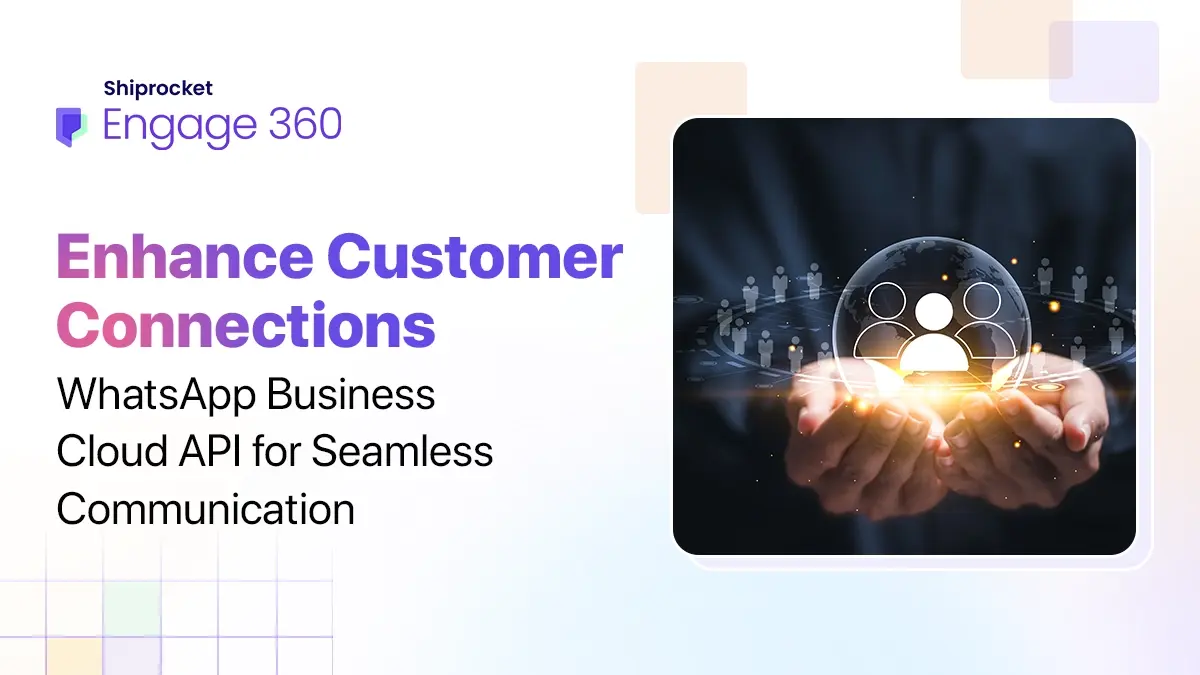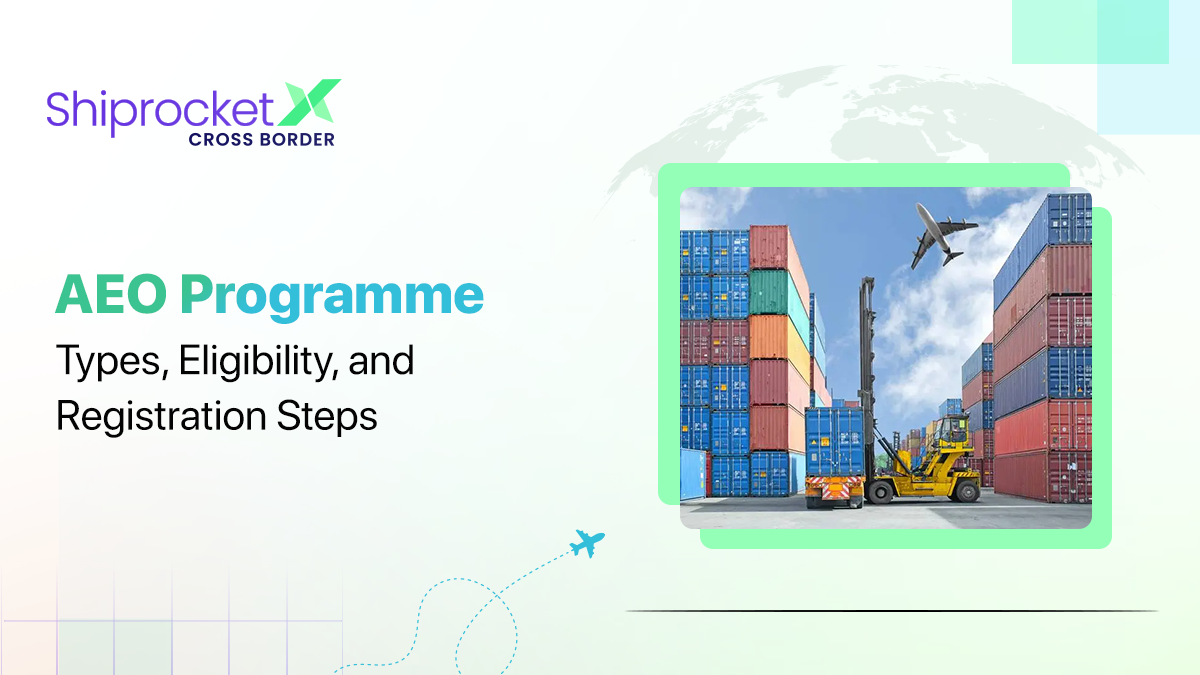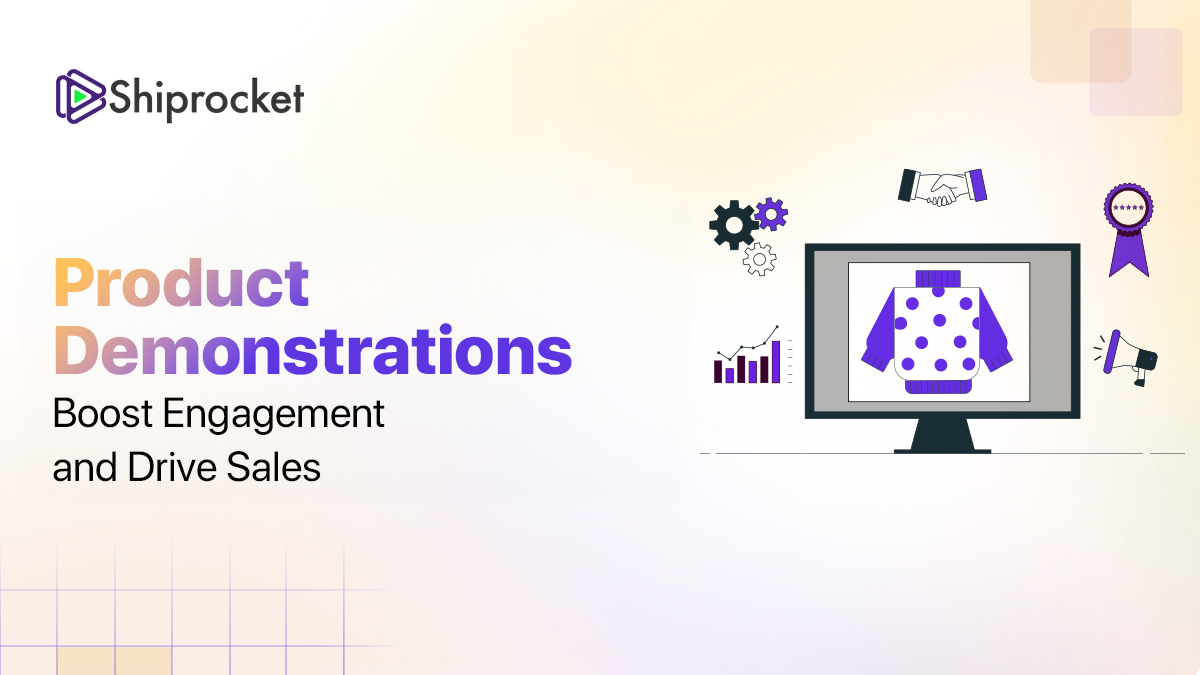B2C eCommerce: Beginner’s Guide to Building a B2C Strategy
Back in 1992, when the internet had just started gaining popularity, Charles M. Stack got the idea of creating an online book store called Book Stacks Unlimited. That’s how B2C eCommerce was born.
With the widespread use of PCs and the World Wide Web, significant marketplaces like Amazon & eBay started emerging. It eventually led to the popularity of the B2C business model, which involves selling directly to customers through the internet.
Let’s understand B2C eCommerce in detail and how it can help your business grow by leaps and bounds.

What Is B2C eCommerce?
B2C eCommerce, also known as business-to-customer eCommerce, refers to a business model in which goods or services are exchanged over the internet directly between businesses and end customers.
The transactions can happen on a website, a marketplace, or a social media channel. B2C eCommerce is one of the most popular business models and is increasingly adopted by sellers worldwide.
A good reason why it helps most brands bloom is that in an online approach, the business process is much more simplified. Furthermore, it’s quite more accessible for buyers as well as sellers.

What Benefits Does B2C eCommerce Bring?
More Profits
In a B2C eCommerce model, you can save the additional costs of infrastructure, electricity, staffing, etc. It helps you lower your operational costs considerably. You can easily manage inventory and warehousing with lesser people and resources. Also, you’re able to broaden your reach at a lower marketing cost. This gives you ample scope to increase your profit margins.
Direct Communication
B2C eCommerce business model lets you communicate with your buyers in a highly personalised way through emails, SMS, and push notifications. You can track results actively and also see which communication method works best for you. This way, you can convert a more significant number of visitors coming to your eCommerce website or social channel.
Broader Reach
Since more people are active on social media, it is easier than ever to reach almost everyone’s mobile screen. This makes B2C eCommerce far better as compared to newspaper ads and billboard hoardings. A person who is viewing an advertisement for your store or any product can reach you with just a click and complete their purchase within seconds.
Better Accessibility
B2C eCommerce allows your buyers to purchase from anywhere at any time of the day. This way, you can move beyond the timing barrier and operate 24*7.
How Different are B2C and B2B eCommerce?
Usually, there is confusion between the two terms B2C eCommerce and B2B eCommerce. Even though both are eCommerce models, the way they operate and the target audience for which the business is done are separate. Here’s a brief comparison:
| Point of comparison | B2C | B2B |
| Full form | Business-to-Customer | Business-to-Business |
| Target audience | End customers | Businesses |
| Buyer’s intent | Personal utilisation of the product | Large scale utilisation for business operations |
| Lead pool | Large & broad | Small and targeted |
| Length of the business relationship | Brief; ends when a purchase is completed | Long term association with a product or service may be offered |
| Business approach | Product-driven | Relationship-driven |
Learn about B2B eCommerce and the best practices for your B2B business
Best Practices for Lasting Success
For your B2C eCommerce business to thrive, consider these best practices that are followed industry-wide:
Personalisation
Personalisation is essential if you want to give your buyers an unparalleled shopping experience. Some personalisation strategies include product recommendations in the form of best-selling and complementary products. Also, your B2C eCommerce store can consist of location-specific offers for your online buyers.
Attractive Imagery
Product images are real game-changers when it comes to purchasing decisions. If your product does not look good enough or is true to the description in the photographs, it will not compel the buyer to make a purchase. Hence, always ensure your pictures are authentic and high-quality.
Informative Descriptions
Product descriptions act as the sales pitch for your product. So they must contain all necessary information such as the name, model, price, colour, special instructions, etc. Along with this, you can also make your product descriptions catchy by including reviews, real-time purchase data, etc.
Read more about product descriptions
Short User Journey
Usually, when customers come to your B2C eCommerce website with an intent to shop, they don’t like to be distracted by offers and additional features. Therefore, make sure that your customers have a smooth journey from the product page until the final payment. After adding the product to their cart, no additional offers or promotions must be shown to them.
No Hidden Costs
Most companies tend to show additional packaging and shipping costs or taxes on the checkout page. The buyer might be lured to your product page looking at the cheap product prices, but after looking at the final cost of the product, which includes hidden costs, they will abandon their cart with a bitter experience. Therefore, include all such costs in the product pricing itself. If you have any extra charges, display them on the product page itself.
Free or Flat Rate Shipping
Today, we’re witnessing a trend of free shipping. Most B2C eCommerce businesses cut down on additional expenses and their profits to provide their customers with the benefit of the best prices. You can also opt for these by working with shipping solutions like Shiprocket. It helps you ship at rates starting from Rs. 20/500gms. This way, you do not have to worry about losing out on profits. Also, you can easily cover losing out on any margins.
One-Day or Two-Day Delivery
Fast delivery is what drives the market today. Businesses spend tons on branding, whereas buyers have different priorities these days. If you can provide a one-day or two-day delivery, the buyer will choose your product even if the price is on the higher side. Thus, associate with partners who give you an end-to-end fulfillment solution, like Shiprocket Fulfillment, to ensure faster delivery of your product.
Buyer Engagement
The most crucial aspect of any B2C eCommerce business is the retention of customers and their loyalty to your brand. To achieve this, you will need to engage with the buyer using strategic emails talking about product offers, additional schemes, benefits, educational content, etc. Moreover, you can also share these in the form of push notifications. Be sure that you do not spam the user, as that can lead to a negative experience.
Product Page Optimisation
Your product pages must have a fast loading speed and engaging user experience, and the content must be carefully placed. Along with this, there must be compelling CTAs to ensure that the buyer clicks on them and continues the purchase and successfully completes it. If your product page is cluttered with ads, offers, and irrelevant information, your product will get lost among the crowd. Therefore, optimise your product page for the best results.
Quality Customer Support
Your support team is the face of your business. Train them to have complete product knowledge so that they can guide the consumer properly and provide them with relevant solutions. You can deploy a customer support platform to make work more accessible. Furthermore, include help docs to ensure maximum information is shared with the consumer in the form of blogs and help pages. This will reduce the pressure on your support team, and they will perform much better.
B2C eCommerce Marketing: Key Elements
No business can be successful if they don’t have a well-drafted and carefully executed marketing plan. The same goes for a B2C eCommerce business as well. Since your target audience is a large group of individuals, you must include strategies to educate your buyers as well as sell them the product.
A clear funda these days is that you don’t sell the product to your buyer; instead, you sell the solution. Hence, draft your campaigns accordingly. Here are a few ways that can help you get started –
Content Marketing
Write content in the form of blogs, eBooks, and whitepapers, and educate your buyers about the industry and how your product can be the best option for them. Dig deep into conversations on forums like Quora and engage with your buyers on a micro-level.
Emails
Emails are a great way to reach your buyers. You can send offers and promotional content to ensure they keep returning to your store. Also, if they are returning customers, you can send them curated content that best suits their needs.
Social Media Marketing
Your social media speaks for your B2C eCommerce business. So ensure you get authentic and helpful product reviews on your social channel. Understand where your audience is most active and share relevant content on that platform. Answer queries on social media and build a connection with your buyers.
Paid Marketing
Google and Facebook ads can help you reach millions on the internet. They are a fast way of reaching out and delivering the message to your buyers. Incorporate them into your strategy for more rapid and quality results.
Influencer Marketing
Influencers are the new celebrities. If you can get influencers to promote your product among their followers, you can get quality leads. People trust influencers with their research and find them to be more reliable than celebrities. Hence, do try and collaborate with as many as you can.
Here are some eCommerce marketing strategies that you can experiment with
Final Thoughts
B2C eCommerce is gaining a lot of traction in the current eCommerce scenario. The lines between B2B and B2C eCommerce are blurring, and we are moving towards a more unified shopping experience. Therefore, it is time to up your game and get started with B2C eCommerce for your business venture.








I ‘m going to start buying products from DELHI and adjoining areas along with Saharanpur of western UP and other cities of central UP.
I am interested about your logistics services.